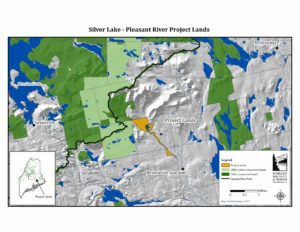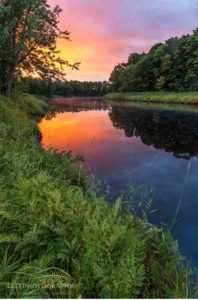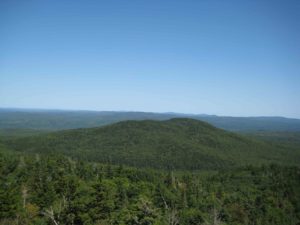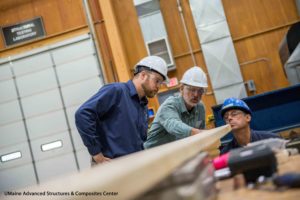The Forest Society of Maine has conserved 4,358 acres of forestland surrounding Silver Lake and 12 miles of the West Branch of the Pleasant River in Piscataquis County, Maine. These lands are visited each year by thousands of people from Maine and afar for fishing, hiking, camping, paddling, hunting, snowmobiling, and more. The property’s popular campsites and access to the river and lake are part of the amenities important to the region’s recreational and tourism economies. Public recreational access is now guaranteed forever.
The Forest Society of Maine (FSM) needed to raise $4.35 million for this acquisition. Success was made possible with the help of many partners and supporters. Leadership gifts were provided by the Elmina B. Sewall Foundation, Jane’s Trust, the Knobloch Family Foundation, The Nature Conservancy, Sweet Water Trust, and the Wyss Foundation through the Open Space Institute.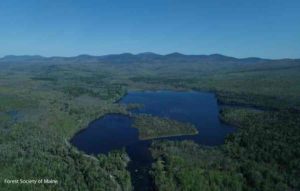
The project safeguards vital river habitat for Eastern brook trout and Atlantic salmon spawning, and habitat for American black duck, Canada lynx, Northern long-eared bat, wood turtle, bald eagle, and many other species of state and national significance. The project additionally protects a 400-acre mature silver maple flood plain forest—one of the largest and best examples in Maine.
These newly conserved lands, adjacent to the historic Katahdin Iron Works, help buffer this state-owned site. The Katahdin Iron Works operated from 1843 – 1890 and employed 400 people at its peak of operations. It used wood from these forestlands to operate its blast furnaces and kilns. Remnants of this operation can still be found. The area also became a popular tourist destination in the 1890s with the Silver Lake Hotel drawing visitors from across the country, attracted by the scenic setting and abundance of fish and wildlife. The hotel no longer stands, but the region’s beauty and natural resources persist and are now conserved for future generations.
The remarkable mix of ecological and recreational values found here made this a high priority project for us, especially as it is fills a key gap in the network of two million acres of already conserved lands in this region of Maine’s North Woods,” said Alan Hutchinson, FSM’s executive director.
The Forest Society of Maine worked with Conservation Forestry—a New Hampshire-based timber investment firm and the owner of these lands since 2009—to develop a conservation future for the property, recognizing the special ecological and recreational values found there. As part of the plan that was developed, FSM was charged with finding an appropriate group to own and manage these lands. The Appalachian Mountain Club (AMC) has become that owner and the Forest Society of Maine holds a conservation easement on the lands.
The Silver Lake – Pleasant River lands are adjacent to AMC’s 70,000 acres of other conservation holdings in the area which provide the focus for its Maine Woods Initiative, an innovative approach to conservation that combines outdoor recreation, resource protection, sustainable forestry, and community partnerships.
Silver Lake and the watershed of the West Branch of the Pleasant River are an ecological treasure trove of plant and animal life. We are honored to be the new stewards of these spectacular lands and waters, and are committed to their protection and accessibility for nature-based recreation,” said Walter Graff, senior vice president of the Appalachian Mountain Club. “This parcel will also allow us to expand our outreach to local youth by providing new and accessible water-based opportunities for canoeing, kayaking, and fishing,” Graff said.
The Open Space Institute (OSI) filled a key role in facilitating project success and funding. “For more than two decades, OSI has been on the ground helping conserve Maine’s recreational lands, pristine rivers, and working forests. The Silver Lake – Pleasant River project builds on these past successes and will deliver unparalleled recreational opportunities for the people of Maine and those who value this extraordinary setting,” said Kim Elliman, OSI’s president and CEO.
OSI’s contribution to the project would not have been possible without the Wyss Foundation’s support for our Eastern Lands Initiative, which aims to protect wilderness landscapes up and down our nation’s east coast.”
The Forest Society of Maine extends its deep gratitude to the people and organizations whose help resulted in permanently conserving these thousands of acres of woods and waters in Maine’s North Woods that are so special to many people and many species of wildlife.
Press coverage of the Silver Lake – Pleasant River project in the MaineBiz.
Click on the map below for a larger view of the Silver Lake – Pleasant River Project lands.